In this topic, we focus on resistance training program design. You will learn about:
- Resistance training and its benefits
- Forms of resistance training
- Joint movements
- Progression
- Regression
- Variations and alternate exercises
- Resistance training terminology
Terminology and vocabulary reference guide
As an allied health professional, you need to be familiar with terms associated with basic exercise principles and use the terms correctly (and confidently) with clients, your colleagues, and other allied health professionals. You will be introduced to many terms and definitions. Add any unfamiliar terms to your own vocabulary reference guide.
Activities
There are activities throughout the topic and an end of the topic automated quiz. These are not part of your assessment but will provide practical experience that will help you in your work and help you prepare for your formal assessment.
Resistance training, also referred to as strength or weight training, involves performing physical exercises with the aid of weights (body weight or equipment-based weights) against gravity to build, shape, tone and improve muscular strength and endurance. It is associated with the use of weights (for example weighted bars or dumbbells), however, resistance bands, body weight (resistance against gravity) and some exercise machines can also be used. Resistance training forms a fundamental component of any exercise program. It will also form the bulk of a personal trainer’s skillset in the typical gym environment. The main components of a resistance training program include:
- exercise selection
- frequency
- the order of exercises (exercise arrangement)
- load (weight)
- volume: reps and sets
- rest periods
- variation
- progression and regression.
When designing a resistance training program, a client will require advice with regards to what type of resistance training they should perform to achieve their goals. The following are three common goals that clients typically wish to obtain.
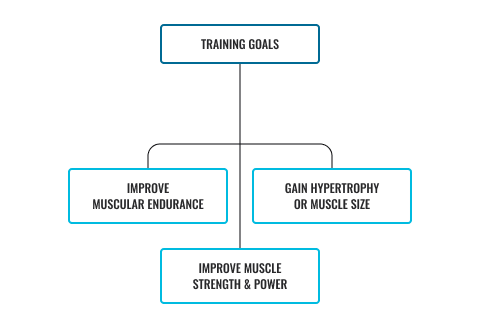
Though many clients will have these desired goals in mind, and perhaps prescriptive goals will be given within their program design also, resistance training can provide the body and mind with further additional benefits. The following are a few examples of the benefits of resistance training.
- Improved strength and muscle tone
- Improved flexibility and balance
- Improved weight management (either increase or decrease depending on goals)
- Improved muscle to fat ratio
- Greater stamina through improved muscular endurance
- Decreased risk of injury
- Improved prevention or control of chronic conditions (for example, diabetes, heart disease, obesity)
- Improved posture
- Increased bone density
- Improved sporting performance
- Improved self-esteem, self-confidence, and mental health.
With a large variety of resistance training available, it comes as no surprise to find a wide range of equipment to support and enhance the training being delivered. It is important to become familiar with a range of resistance training equipment that can be included as a part of the program design for the client. Equally as important, is knowing how to competently demonstrate the use of each equipment safely and effectively for your client. See the following image slides to find out the different types of resistance training that can benefit in strengthening the muscles, whether at home or the gym.
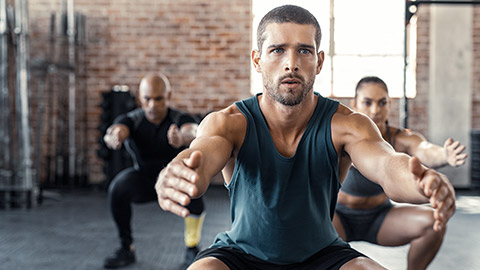
Resistance training is typically composed of single joint or multi-joint (compound) movements, or a combination of both. Whether the exercise is a single or multi joint movement depends on how many joints are involved when performing the exercise movement. Let’s take a look at these two categories of joint movements within resistance training.
- Single joint movements: Single joint movements (typically requiring movement across one joint) are less technical and isolate one targeted area to build on muscle strength and growth.
- Multi-joint movements: Multi-joint movements require slightly more complex movements that engage more than one muscle group (which therefor require more than one joint to move) to increase strength and performance.
The following video explains the pros and cons between the two categories of joint movements through a resistance training program and how to effectively design these within the program to help achieve client goals in strength and performance.
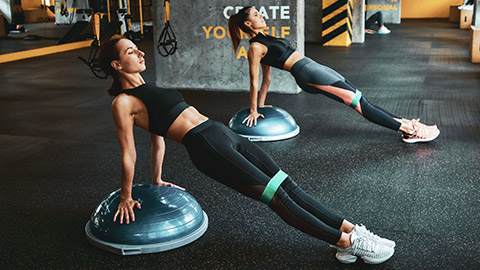
Progression, also referred to as progressive overload, is when the workload of the training program gradually increases. The training program is systemically modified over time as the client or athlete adapts or becomes accustomed through repeated exposure to the techniques or exercises. Increasing the workload (or overload) is usually done to maintain the same intensity of training after adaptation has occurred. This must be a gradual and progressive process as excessive overload can lead to injury and fatigue. For progression to be effective, the client will need to exercise at a level above normal (a little out of their comfort zone) to create adaptations that cause the body to function more efficiently. An appropriate overload for each person can be obtained by manipulating the frequency, intensity, and duration of exercise sessions, thereby, gradually increasing the training load and intensity from easy to more demanding. This is known as the overload principle. Typically, it is best practice to change only one variable at a time to be able to accurately account for adaptations and observations made during a training session. The following graph shows the progressive nature of the overload principle.

Progressive resistance training
Progressive resistance training (PRT) within a training program will aim at gradually increasing the strength of a muscle/s through resistance exercises. The intensity, frequency and duration can be manipulated to increase the difficulty each time the client progresses and adapts. Therefore, a standard resistance training program cannot be implemented for everyone, as every individual will vary on strength and progression. Determining when to manipulate these variables will require a close observation throughout each training session to view when the client is exhibiting improved strength and adaption.
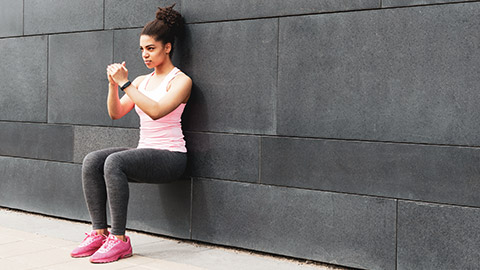
Regression is defined as using less technical exercise using the same movement pattern. For instance, a squat can be made easier by eliminating the use of weights and perhaps performing a wall squat, using the wall to support the movement. Regression is often it is thought of as a negative as it is not pushing the body to its limits, however, regression is a fabulous way to build strong foundations to perfect the technical skills that will allow for more effective progression. For a client to become proficient in resistance training exercises and reach their desired goals, they will require:
- the assistance of a fitness professional to help guide them with safe and efficient techniques
- a personalised training program that is closely observed to increase complexities for progression
- regular practice of exercises.
Differences between regression and progression
Essentially the main differences between regression and progression is that regression is less technical in nature whilst progression gradually becomes more technical. For effective implementation of regression and progression training, it is important to adapt the resistance exercises to the individual client’s strengths and limitations in accordance with their goals and health requirements. This may mean that, at times, training may require to take a few steps back from progression training to regression for recovery purposes or to suit and adapt to the level of skill being demonstrated by the client prior to progressing towards more technical movement patterns.
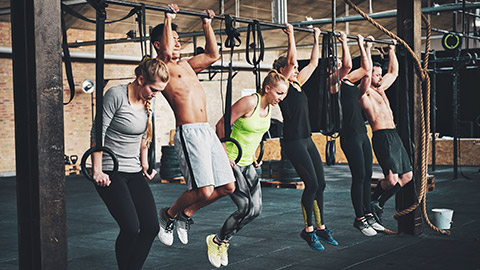
Resistance training encompasses a wide variety of exercises which aim to target different muscle groups and meet the needs of a variety of clients who will have different skill levels, needs and goals. In order to ensure a program is suitably designed, an excellent trainer will have a bank of exercises both in their program and up their sleeve. These will need to be called upon should a client be either unable to perform a particular exercise, require a more advanced exercise technique or desired equipment is being used, these situations will require variations or alternate exercises, typically in the form of regression (easier) or a more progressive (advanced) exercise. Very rarely will a program go 100% as planned, therefore, it is essential to come prepared with alternative exercises in mind to ensure the flow of the session as well as an appropriate exercise selection, ensuring the client remains safe in achieving their goals in a specific manner.
The following table provides a selection of example progressions and regressions of different movements along with alternatives which may be used depending on an individual’s skill levels.
| Movement | Regression | Standard | Progression |
|---|---|---|---|
| Squat |
|
Bodyweight Squat |
|
| Hinge |
|
The Romanian deadlift (RDL) |
|
| Lunge |
|
Walking Lunge |
|
| Push (bodyweight) |
|
Push-Up |
|
| Push (external load) |
|
Bench Press(Dumbbell) |
|
| Horizontal pull |
|
Bench Row |
|
| Vertical pull |
|
Lat Pull down |
|
| Press |
|
Dumbbell press |
|
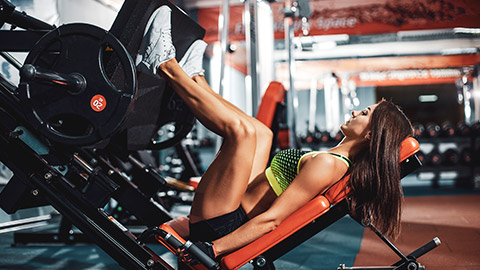
When discussing a resistance training program with a client, it is important to be mindful of the language used as, some terms may be unfamiliar. Often in the world of fitness, there will be the use of slang and acronyms when communicating about a program design, for instance, “rep” and “BMI”. Not always will a client understand these fitness terms, therefore, when designing a program for your client, use the opportunity to explain the language that will frequently be used to ensure information of the program requirements are always clearly understood.
The following describes some common terms used when prescribing a resistance training program for your client.
- Body Mass Index: Body Mass Index, also known as BMI, can be used as an indicator of body fat. Note that this measurement is calculated from weight and height alone, it does not consider factors such as tissue type, therefor this is better used within the general population rather than elite athletes, with this in mind, this measurement should be used as a guide not a diagnostic tool. Trainers may consider weight, height, body composition and circumference measurements.
- Resistance: The resistance is the amount of weight the muscles are working against when completing an exercise. For example, your body weight can be used as resistance during a squat exercise, adding further resistance would include increasing the weight by adding free-weights or performing the exercise on machine based equipment.
- Rep (Repetition): This refers to a complete motion of a particular exercise, for instance, a squat is not a squat without returning up to the starting position. The term rep will be used in the design of a training program to prescribe the number of times to perform the exercise. For example, three reps of a squat will require to be performed three times.
- Set: A set is the required number of reps performed before resting. For instance, you can design a program for a client that includes three sets of squats performing 10 reps. Therefore, the client will need to perform 10 reps of squats, three separate times.
- Rest: A program design will allocate an amount of time that the client will need to rest between each set of exercises. This generally ranges from as little as 15 seconds up to 2 minutes to allow time for the muscles to recover but can also be increased to 4 minutes for powerlifters.
- Isolation Exercises: Isolation exercises target one muscle group to provide muscle growth. These movements require one single joint to perform the exercise. For example, a leg curl only requires the flexion of the knee joint.
- Compound Exercises: These are multi-joint movements that require more than one joint (in turn, more than one muscle group) to perform the exercise. For example, when performing a bench press, both the shoulder joint and elbow joints are involved in the exercise, which will engage more than one muscle. Additionally, because these exercises require movement from multiple muscle groups, they are extremely effectively in burning more calories.
- Spotter: This term describes a person that supports the other when heavy resistance training exercises. A spotter serves an important role in observing technique and equally as important, ensuring safety. For example, for exercises such as a barbell bench press, a spotter can support in lifting the barbell if the individual struggles to complete any more reps safely towards the end of the set.
In this topic, we focused on resistance training program design. You learnt about:
- Resistance training and its benefits
- Forms of resistance training
- Joint movements
- Progression
- Regression
- Variations and alternate exercises
- Resistance training terminology

